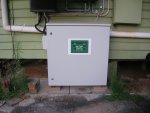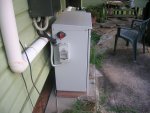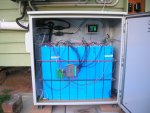The BMS used in my packs are made by PACE, they do offer the parameters management that if properly configured will look after the cells, excluding BMS faults, fingers crossed, having said this, no bad reports that I was able to find.
I tend to look at more comprehensive battery specifications to decide upon the best parameters to achieve the greatest number of cycles, the problem with Chinese sourced batteries none provide detailed cell specifications but only provide pack settings that are preprogramed in the BMS.
I found detailed cell specifications that are very similar to what I have, from these specification I noted that the cell manufacturer recommends a SOC cycling of 10% to 90% with a cut-off voltage of 3.65 volts. I can easily establish the best top end voltage of 3.285 volts based on the 90%
This seems to be too low. I went back to the pack manufacturer by looking at the BMS settings, they specify in the manual a max voltage of 3.55 Volts
The cut off is set at this level and the pack disconnect from the charger.
By looking at the data sheet and the instruction book data the charge voltage is 97% Note that they claim 6000 cycles whilst the battery datasheet claims 4000 cycles.
In my research I found there is a direct relationship from the number of cycles to the value of top charge voltage used, the lower the less heat and the longest number of cycles.
With the above information I went to the actual graph for LiFePO and noted that the energy stored as a function of voltage
Between 3.6 and 3.8 there is little to be gained as stored energy, noting that the pack manufacturer is already operating below 3.6 Volts at 3.55 Volts, clearly to achieve the stated number of cycles.
I chose 3.52 Volts, doing so from recommendation of others with more knowledge than I on using Chines packs.
Table from BMS showing less than -1% of SOC (Note BMS has tuned off the pack when fully charged and the house load is on the solar panels)
Reference data from similar cell used in my system.
LF105 3.2V 105Ah LiFePO4 Lithium Battery Rechargeable lifepo4 prismatic Cells
www.evlithium.com
In the design I was conscious if using 400 Ah system of the large cycling currents, then if a failure in a cell was to take place the whole system would be off line, so I chose four 105 Ah packs to provide redundancy and lowering the currents involved on each pack and the associated temperature raises.
The BMS's communicate with each other via the CAN bus, I am noting that smart cycling is taking place to maintain pack to pack balance,
The average currents involved are very low the worst case I have logged is 20 Amps in each pack during a charge cycle, with 24 Amps during a full load discharge test, with this strategy the heat generated is kept at the lowest level possible.










